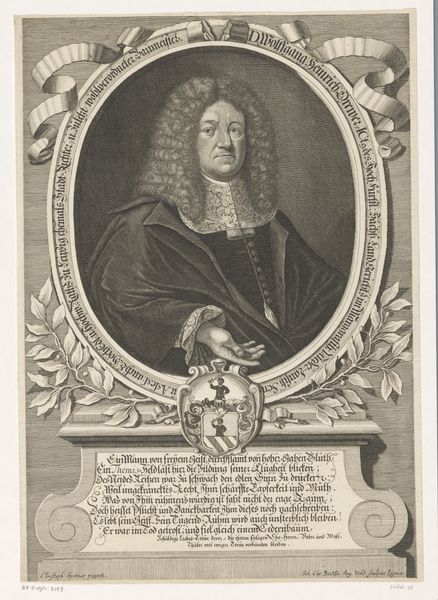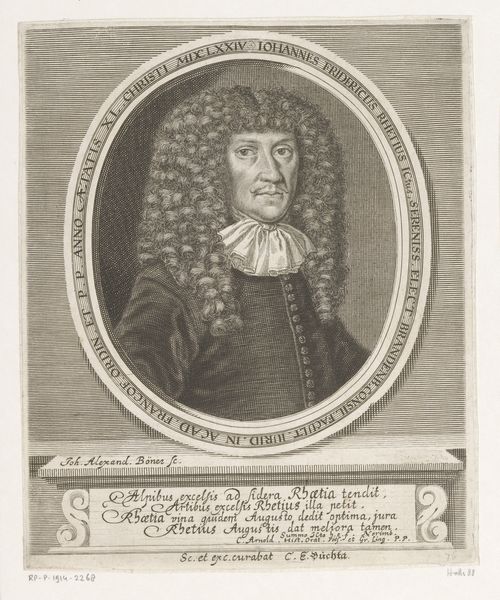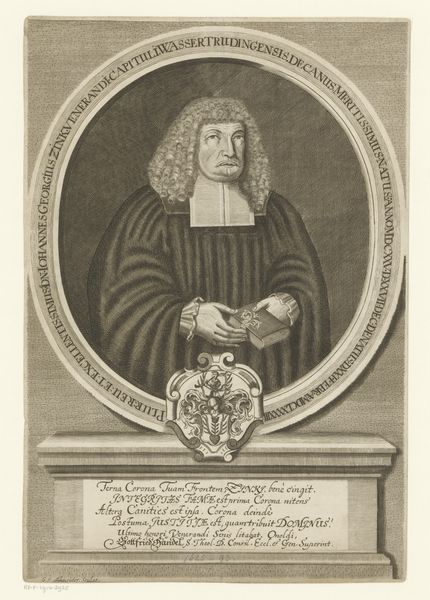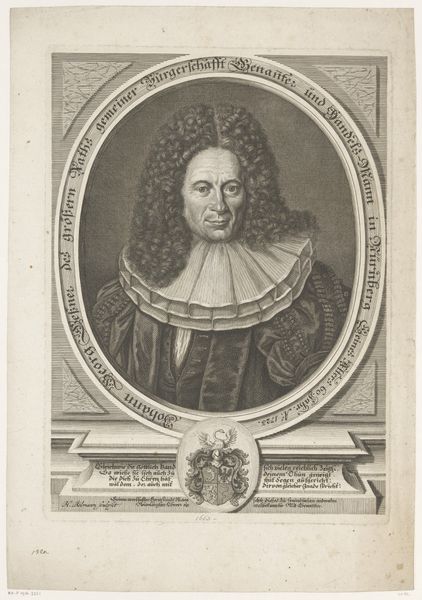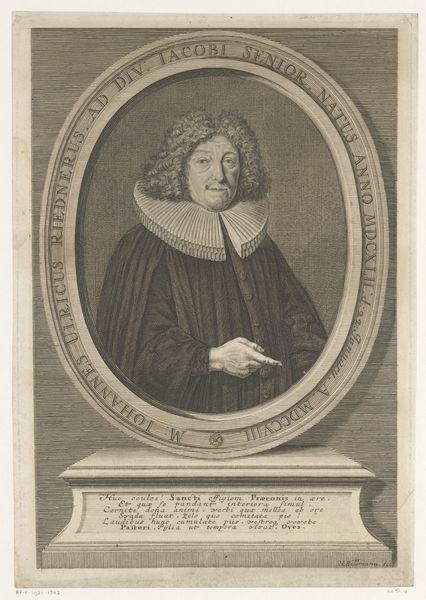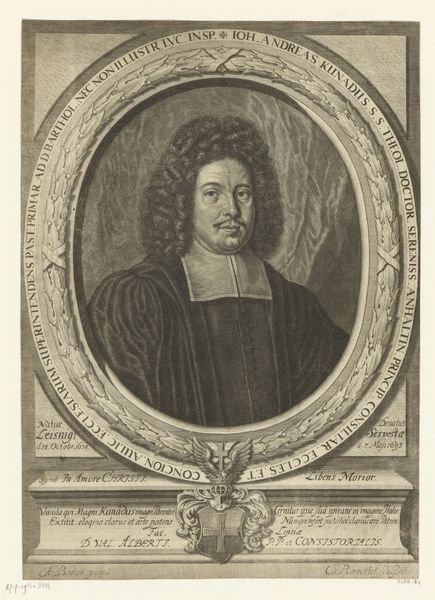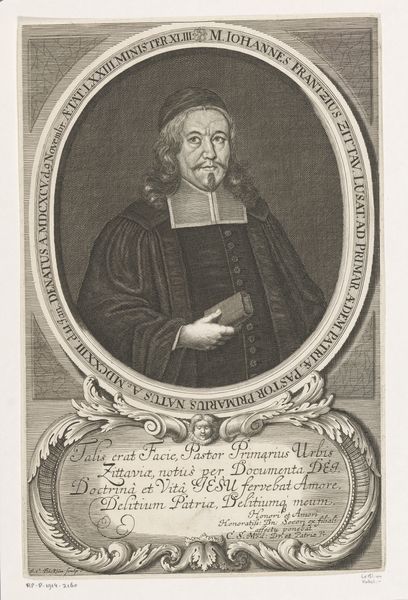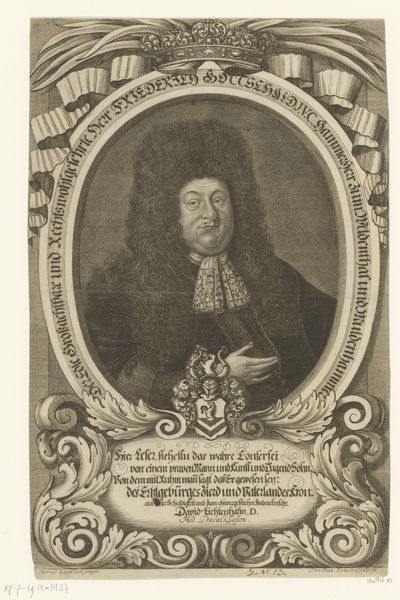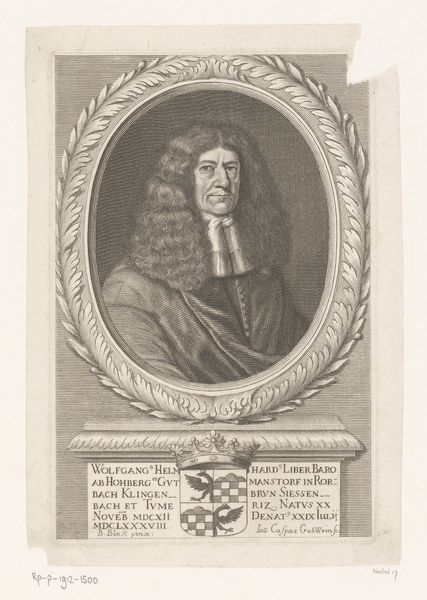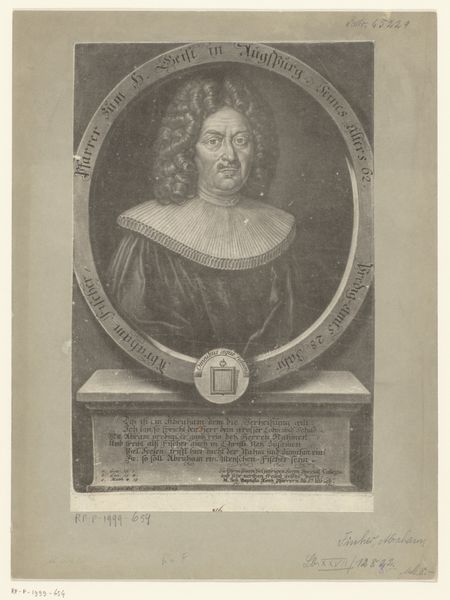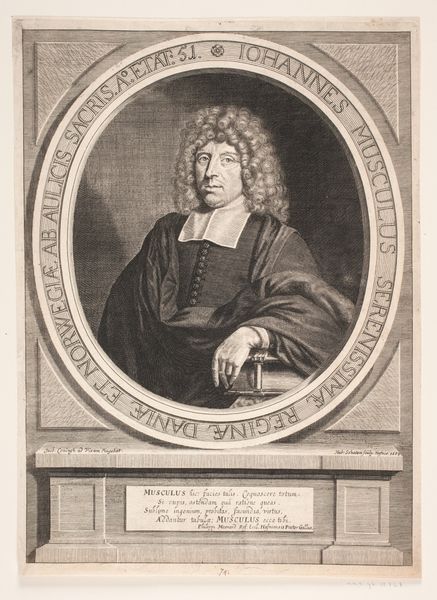
print, engraving
#
portrait
#
baroque
# print
#
engraving
Dimensions: height 285 mm, width 190 mm
Copyright: Rijks Museum: Open Domain
Curator: Take a moment to consider this engraving, "Portret van Christian Packbusch," dating from 1665 to 1721. The Baroque style, rendered through the medium of printmaking, certainly evokes a particular period. What’s your first impression? Editor: A feeling of formality, definitely. The oval frame, the subject's weighty presence… There’s a heaviness there, but also a kind of… I want to say controlled confidence? Curator: It’s fascinating how printmaking democratizes image production. Engravings like this, circulating widely, facilitated a kind of social mobility through portraiture. Not just anyone could commission a painted portrait. Editor: True, but the choice of symbols would still communicate very specifically to those who understood them. The text, the crest below – it speaks volumes about Packbusch’s status and learnedness. What does it say? Curator: I'm no expert in languages but the artwork information and its OCR translation mention that he was a legal official; Cur. Supr. Provincial, Lips. Advocat, and assessor. This suggests Packbusch was quite influential within his professional sphere. The engraving itself becomes a form of branding. Editor: And the wig! It’s practically a halo. The details captured in the engraving emphasize Packbusch’s… substantiality, linking it with importance. What kind of work might’ve gone into something like this? Curator: Think of the skilled labor: the engraver meticulously cutting lines into a metal plate, each varying in depth and density to achieve tonal variation. Then there's the press, the paper… each impression is a product of careful control over materials and technique. The choice to portray him in this ornate frame says something too. It connects the figure to luxury. Editor: Definitely a carefully constructed image, intended to convey not just a likeness but also layers of meaning to different audiences across social lines and beyond geographical areas, once copies went out. Curator: Considering the effort of production involved here helps us re-evaluate prints like this that have been disregarded due to the emphasis given to oil on canvas paintings over the course of time. They tell the tale of society during those periods like few others do. Editor: Absolutely. It pulls us away from just aesthetic appreciation and asks: what were the image’s intended effects and influences?
Comments
No comments
Be the first to comment and join the conversation on the ultimate creative platform.
